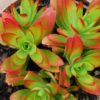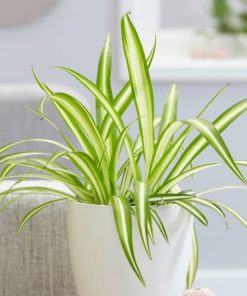Description for Curry Leaves, Kadi Patta, Murraya koenigii, Meetha Neem
Curry tree is grown in tropical to subtropical to Mediterranean and temperate climates and has compound leaves areas where it can grow up to 5 – 6 metres high. Its green elongated leaves are glossy, aromatic and beautiful.
The plant produces white fragrant flowers.Winter hardy to USDA Zones 10-12 where it may be grown in rich, moist, well-drained loams in full sun to part shade. Best sited in locations sheltered from strong winds. In St. Louis, plants may be grown in containers that are overwintered indoors.
Its botanical name was Murraya Koenigii, but its name has been changed to Bergera Koenigii. It is known by different names as Kari patta, Kadipatta, Karivepallai, Curry Patta, Curry Leaf, Karivepalla, Murraya koenigii spreng, Sweet Neem, etc.
| Common name | Flower colours | Bloom time | Height | Difficulty |
|---|---|---|---|---|
| Curry Leaves, Kadi Patta, Meetha Neem, Murraya koenigii | White | Seasonal bloomer | 2.00 to 6.00 Metres | Easy to grow |
Planting and care
The plant grows well in full to part sun, so it is better to grow it outdoors. However, it does not need full intense sun. If you live in an apartment, any area indoors where you get direct sunlight is good for the plant.
You can grow the plant in pots in balconies or terrace. If you place your plant indoors, select a warm place with plenty of light-direct or indirect sun light or artificial white light
| Sunlight | Soil | Water | Temperature | Fertilizer |
|---|---|---|---|---|
| Full Sun to Partial Shade | well-drained soil | Keep soil moist throughout the growing season | Na | Apply any organic fertilizer |
Caring for Curry Leaves
- Allow the plant to dry out completely between watering.
- Curry plant benefits with warm water feeding.
- In winter when the plant goes dormant, reduce watering in order to prevent root rot
Typical uses of Curry Leaves
Special features: Interesting house plant, the leaflets of which can be snipped for cooking.
Culinary use: used in cooking vegetables, great herb.
Ornamental use: The plant is used for ornamental purpose.
Medicinal use:
-
- Unverified information Poppy is one of the most important medicinal plants.
- Traditionally, the dry opium was considered an astringent, antispasmodic, aphrodisiac, diaphoretic, expectorant, hypnotic, narcotic, and sedative.
- Poppy has been used against toothaches and coughs.
- The ability of opium from poppy to serve as an analgesic is well known.
- Opium and derivatives of opium are used in the pharmaceutical industry as narcotic analgesics, hypnotics, and sedatives.
- Opium and the drugs derived from opium are addictive and can have toxicological effects.
- Note: The following information is general guidelines. Be sure to ask your healthcare provider for guidelines.
References
- http://www.mykitchengarden.info/2015/08/growing-curry-leaves.html
- http://www.missouribotanicalgarden.org/PlantFinder/PlantFinderDetails.aspx?kempercode=d441




















Reviews
There are no reviews yet.